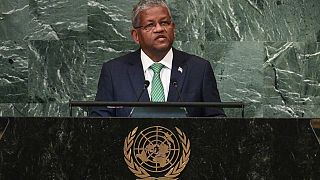Seychelles
The Seychelles archipelago declared a state of emergency on Thursday and invited its residents to stay at home after an explosion in an explosives warehouse and flooding, according to a press release from the presidency.
“Following an explosion at the CCCL explosives warehouse which caused major damage (...) and extensive destruction caused by heavy rains, the President declared a state of emergency for today "Today December 7", indicated in this text the president of the Indian Ocean archipelago, Wavel Ramkalawan.
"All schools will be closed. Only workers employed in essential sectors will be allowed to travel, to allow emergency services to do their crucial work," he added.
The explosion took place in the Providence industrial zone on Mahé and caused enormous damage on site and in the surrounding area, added the presidency without further details. Mahé is the largest island in the archipelago, where 87% of the population of 98,000 lives.
“The Seychelles International Airport continues to operate, as do passenger ferries between the islands,” said the official tourism site Visit Seychelles on X.
The public television channel SBC, for its part, confirmed that heavy rains had caused major damage on Wednesday evening in several areas of Mahé. Photos posted on its official Facebook account show collapsed houses, landslides and significant cracks on the island's roads.
Known for its heavenly white sand beaches and luxury tourism, the Seychelles archipelago, a former British colony, is made up of 115 islands. It is the richest African country in terms of gross domestic product per capita, according to the World Bank, driven by tourism and fishing. But this index masks great inequalities: due to the cost of living, nearly 40% of the population lives in poverty.
East Africa and the Indian Ocean have been affected for weeks by torrential rains and floods linked to the El Niño phenomenon, which have displaced more than a million people in Somalia and caused more than 300 deaths in the region, very vulnerable to climate change and where extreme weather phenomena are increasingly frequent and intense.
According to the UN, the situation has been aggravated by the joint impact of El Niño in the Pacific, which causes abnormally high temperatures in the ocean, and the Indian Ocean Dipole, a divergence in surface temperatures from the sea between the western and eastern areas of the ocean.
El Niño, typically associated with rising temperatures, droughts in some parts of the world and heavy rains in others, is expected to last through April.
This meteorological phenomenon last occurred in 2018-2019, followed by an exceptionally long episode of La Niña, the opposite (cold) phenomenon which ended this year.
El Niño has already wreaked havoc in Eastern Africa. From October 1997 to January 1998, gigantic floods fueled by torrential rains it caused caused more than 6,000 deaths in five countries in the region.












00:41
Devastating floods in Eastern Cape Leave 78 dead as rescue efforts continue
01:13
Deadly Floods Devastate South Africa’s Eastern Cape: At Least 49 Dead, More Missing
00:24
Greenland and Iceland saw record heat in May
01:30
Macron sparks global push to protect oceans
01:06
Experts warn of an increase in Glacier-related risks from climate change
01:39
Hundreds dead and missing after Nigerian town submerged by floods